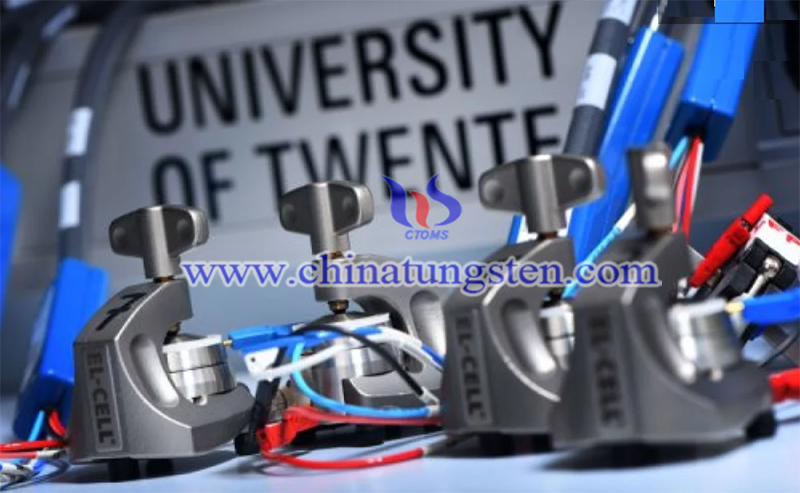Niobium Tungsten Oxide Replaces Graphite to Make Faster-Charging Li Batteries
- Details
- Category: Tungsten's News
- Published on Saturday, 19 December 2020 22:53
Researchers from the University of Twente MESA+ Institute in the Netherlands found that niobium tungsten oxide (NbWO) can well replace graphite anodes in Li batteries. Which can be charged Lithium-ion opens up more "paths" to accelerate the charging speed of lithium batteries. These are seen as promising candidates to replace the graphite used as the negative electrodes in today's lithium-ion batteries, as they allow lithium ions to flow through them at much greater rates.
Li batteries are composed of four parts: cathode, anode, electrolyte and diaphragm. When a lithium-ion battery is discharged, lithium ions flow from the anode to the cathode. When recharged, lithium ions flow from the cathode to the anode. In this process, the faster the lithium ion moves, the faster the battery will charge and the greater the power (that is, the more energy that can be transferred in a given time).

In order to increase the flow rate of lithium ions, currently the most common method is to manufacture nano-sized electrode particles to shorten the distance that the lithium ions must move, but this method has many challenges. Compared with ordinary materials, nanoparticles are difficult to gather closely together, which limits the energy they can store per unit volume. In addition, it will produce unnecessary chemical reactions with the electrolyte.
To overcome this problem, Dutch researchers indicated that niobium tungsten oxide can be used as the anode material for lithium batteries, because niobium tungsten oxide itself has very excellent electrochemical performance and rigidity, and no further improvement is needed to make the prepared. The resulting lithium battery has a good charge and discharges characteristics.
Through its testing, the team found that these downsized, nanostructured particles performed impressively, writing, "the results demonstrate that downscaling below 100 nanometers significantly enhances the lithiation dynamics of niobium tungsten oxide. Furthermore, it suggests that the grain boundaries of Nb18W16O93 have significant influence on the fast lithiation process."

While the results are promising, the team sees the technology finding serving specific uses, at least to begin with. The design wouldn't be suitable for electric cars, the researchers note, as it would require too big a battery pack. Where it could prove valuable, however, is in some “peak-shaving" scenarios, where an over- or under-abundance of grid energy from renewable sources requires batteries to be discharged or charged quickly to help manage the load.
The scientists see other possibilities in using the technology for Li batteries that power heavy machinery, but for now, are working to fine-tune the electrode by investigating its optimal size.
- Tungsten Manufacturer & Supplier, Chinatungsten Online: www.chinatungsten.com
- Tungsten News & Prices of China Tungsten Industry Association: www.ctia.com.cn
- Molybdenum News & Price: news.molybdenum.com.cn
- Tel.: 86 592 5129696; Fax: 86 592 5129797; Email: sales@chinatungsten.com



 sales@chinatungsten.com
sales@chinatungsten.com